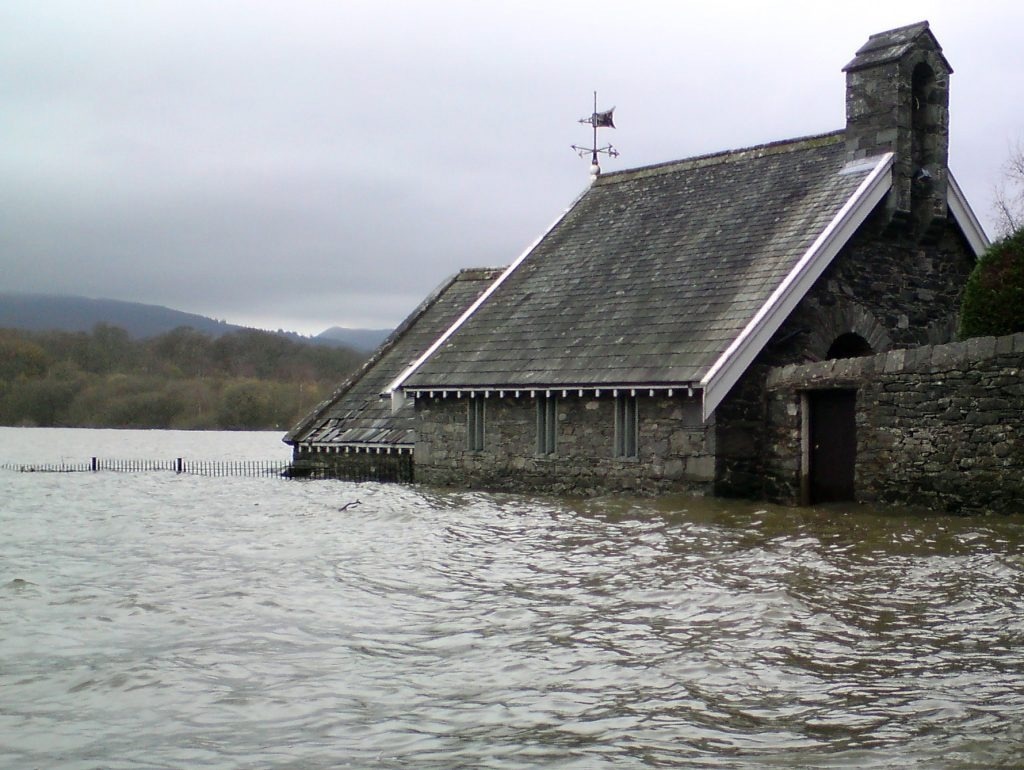Reviewed by Alex SmithJan 10 2023
Due to recent changes in the climate, land use, infrastructure, and population expansion, more people than ever are at risk of flooding. To avoid physical and economic damage, it is essential to precisely estimate flood frequency and severity.

Flooded lake house, Keswick, Cumbria, UK. Image Credit: Gavin Lynn
Traditional flood frequency analysis assumes that flooding follows historical trends, and the methodologies used frequently fail to account for changing conditions like climate change, river regulation, and land cover variation. This increases the likelihood of underestimating flood frequency and severity and developing less resilient infrastructure.
Investigators from Xi’an Jiaotong-Liverpool University in China, Chung-Ang University in Korea, and the University of Liverpool in the United Kingdom presented an alternate method for analyzing flood frequency in a changing environment in a recent study published in the Journal of Hydrology.
The scientists suggest a model based on nonstationary flood frequency analysis. Nonstationary models provide more trustworthy estimates for water-related structures and flood mitigation measures because they account for fluctuations in flood frequency-influencing factors.
While nonstationary flood frequency analysis is now a major research issue, there is no consensus on the most suitable methodologies. Current models are either too complex or too costly for engineers or hydrologists to put into practice.
Mengzhu Chen, the paper’s first author, is a Ph.D. student in the Department of Civil Engineering at XJTLU. She published a study in 2021 that employed a different model of nonstationary flood frequency in the United Kingdom. She discovered limits in extending this method to practices such as engineering design and hydraulic structure design.
We were unable to express the model as a simple mathematical formula which made it difficult to interpret and calculate. Therefore, we wanted to find a more suitable model.
Mengzhu Chen, Study First Author and Ph.D. Student, Department of Civil Engineering, Xi’an Jiaotong-Liverpool University
In the present study, the investigators used historical flood data from 161 catchments across the UK to analyze and compare alternative modeling methodologies. Watersheds or drainage basins have natural limits such as ridges, hills, or mountains, and all surface water drains to a shared channel to form rivers or creeks.
Researchers discovered that the “fractional polynomial-based regression” model is the most adaptable, effective, and user-friendly of the lot. This method is a promising tool in some practical areas of research, such as medical statistics and clinical research, although it is currently used very little in hydrology.
Bridging the Gap
Currently, there is a gap between hydraulic research and practice, as most practitioners are not familiar with nonstationary models even though they have gained popularity in academia. The findings of our recent study provide recommendations to hydrologists and engineers to help them choose from the available analysis models.
Mengzhu Chen, Study First Author and Ph.D. Student, Department of Civil Engineering, Xi’an Jiaotong-Liverpool University
Chen adds, “For practitioners, the fractional polynomial model we propose in our paper can be an additional valuable tool for application. It can be expressed as a mathematical formula and is more user-friendly. After all, the primary purpose of nonstationary flood frequency analysis is to provide estimations for the design, construction, and management of water-related infrastructure.”
Nevertheless, there’s a long way to go before nonstationary methods can be widely used in practice. A more user-friendly, straightforward, and generally agreed-upon approach for nonstationary flood frequency analysis is still worth exploring in the future. We also need further investigation into the complex underlying factors influencing flood frequency to help prepare for future extreme weather events.
Mengzhu Chen, Study First Author and Ph.D. Student, Department of Civil Engineering, Xi’an Jiaotong-Liverpool University
Mengzhu Chen and Professor Konstantinos Papadikis from XJTLU, Dr. Changhyun Jun from Chung-Ang University, and Professor Neil Macdonald from the University of Liverpool carried out the research.
Journal Reference:
Chen, M., et al. (2023) Linear, nonlinear, parametric and nonparametric regression models for nonstationary flood frequency analysis. Journal of Hydrology. doi.org/10.1016/j.jhydrol.2022.128772.